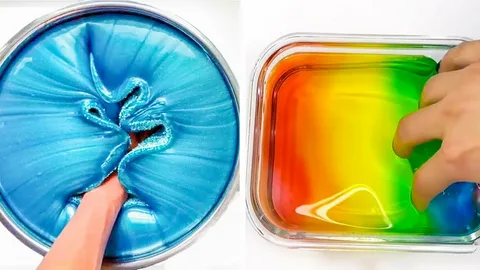In recent years, slime has evolved from a simple children’s craft into a massive social media sensation. The craze shows no signs of slowing down, captivating audiences of all ages with its satisfying textures, vibrant colors, and creative uses. But how did this sticky, stretchy substance become an internet phenomenon? Let’s dive into how slimes took over social media: trends, influencers, and more.
The Rise of the Slime Trend
The slime trend started around 2016, with a surge of DIY slime videos on platforms like YouTube and Instagram. These videos often featured creators mixing household items like glue, borax, and food coloring to make different types of slime—from fluffy to crunchy to clear.
What made slime so appealing? Part of the magic lies in its sensory nature. Slime videos are part of the larger ASMR (Autonomous Sensory Meridian Response) trend, offering viewers a calming, often satisfying experience. The squishes, stretches, and pops deliver a type of digital stress relief that resonated with millions.
Influencers Who Made Slime Go Viral
A significant factor in how slimes took over social media: trends, influencers, and more is the emergence of slime influencers. Creators like Karina Garcia, known as the “Slime Queen,” built entire careers around crafting and reviewing slime. Her YouTube channel boasts millions of subscribers, and she even launched her own slime product line.
Other influencers followed suit, creating visually stunning slime content across TikTok, Instagram, and YouTube. These creators brought innovation to the scene by experimenting with scents, colors, and add-ins like glitter, beads, and foam.
Popular Slime Variations and Challenges
Slime isn’t just about playing with goo—it’s a culture. Popular slime trends include:
- Butter slime: Soft and spreadable, made with clay.
- Crunchy slime: Filled with beads or foam for a textured sound.
- Glow-in-the-dark slime: Made for visual impact in the dark.
TikTok especially played a huge role in slime’s viral status. Challenges like #SlimeFlip and #SatisfyingSlime trended for weeks, encouraging users to create and share their own slime creations. These interactive trends showcased how slimes took over social media: trends, influencers, and more, turning a niche hobby into a global obsession.
The Business of Slime
What began as a DIY pastime has now become a profitable business. Online stores, Etsy shops, and even retail chains now stock handmade slime products. Many influencers have monetized their following through branded merchandise, slime kits, and sponsored content.
The slime industry continues to expand, driven by consumer demand and influencer marketing. It’s not just a fad—it’s a thriving community with its own economy.
Conclusion
From DIY tutorials to influencer empires, the slime phenomenon shows no signs of fading. The story of how slimes took over social media: trends, influencers, and more reveals a fascinating blend of creativity, sensory satisfaction, and entrepreneurial spirit. Whether you’re a casual viewer or a dedicated “slimer,” it’s clear that slime has made a permanent mark on the digital landscape.


